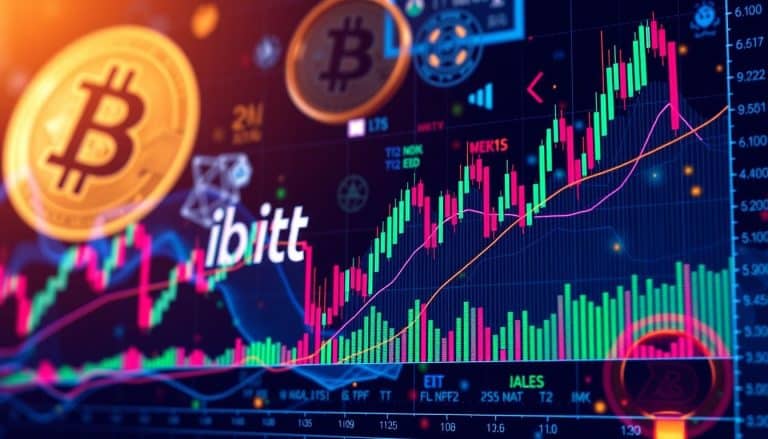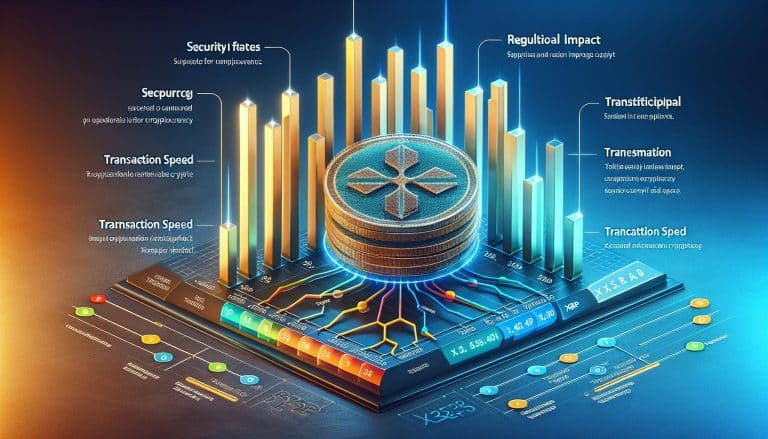Debunking the Biggest Myths About Altcoin Investing: Clear Insights for Smart Decisions
Investing in altcoins is a topic that intrigues many but is often clouded by misconceptions.
One critical myth is the belief that altcoin investing guarantees unlimited growth potential. While some altcoins have seen significant gains, it’s crucial to approach each investment with a realistic perspective and a clear understanding of the risks involved.
Another common misunderstanding is that more coins automatically lead to better diversification. This idea can be misleading since not all altcoins possess the same stability or potential for growth.
The market is complex, and investing wisely requires thorough research and a keen eye on liquidity and security aspects.
You might also hear that early adoption of an altcoin ensures future success. In reality, being an early adopter does not necessarily equate to a winning investment. Developer activity, market conditions, and regulatory frameworks play substantial roles in determining an altcoin’s future. By learning to navigate these dynamics, you’ll be better equipped to distinguish reality from myth.
Key Takeaways
- Altcoin investing does not guarantee unlimited growth.
- More coins do not always mean better diversification.
- Early adoption does not secure future success.
Understanding Altcoin Basics
Altcoins refer to cryptocurrencies other than Bitcoin. They serve various purposes and offer different features. Understanding how altcoins work and their diverse market options helps you make informed investment decisions.
Defining Altcoins and Their Purpose
Altcoins are any type of cryptocurrency that is not Bitcoin. The term “altcoin” is a mix of “alternative” and “coin,” implying that these coins provide various alternatives to Bitcoin.
While Bitcoin primarily serves as a digital currency or store of value, altcoins often aim to improve upon Bitcoin’s framework.
Some altcoins focus on providing greater privacy and anonymity, while others prioritize faster transaction speeds or lower fees.
For example, Ethereum, a popular altcoin, enables smart contracts and decentralized applications (dApps), expanding its usefulness beyond simple transactions. Ripple, another altcoin, facilitates low-cost international transfers, making it appealing for financial institutions.
You might also encounter altcoins like Litecoin or Cardano, each with its own target use-case or technical improvement. In essence, altcoins broaden the scope of what cryptocurrencies can do by offering varied functionalities tailored to specific needs.
The Variety of Altcoins in the Market
The altcoin market is diverse, with thousands of different coins available. This variety means you have a wide range of investment opportunities.
Some altcoins are designed for niche uses, while others aim to serve as broad-based digital currencies.
For example, altcoins offer various functionalities, helping to diversify your investment portfolio. Stablecoins, another type of altcoin, are pegged to stable assets like the US dollar to minimize volatility.
In addition, utility tokens are used within specific platforms to gain access to goods or services. Governance tokens give holders voting rights in a project’s direction.
These altcoins differ in technology, use-case, and market dynamics, providing investors with a plethora of options to choose from based on their investment goals and risk tolerance.
Common Myths About Altcoin Investments

Many misconceptions surround altcoin investing. These ideas often confuse new investors, leading to poor decisions. Understanding these myths can help you make better investment choices and manage risks effectively.
Quick Profit Guarantees
It’s a myth that altcoin investments promise quick profits. While some people have made fast gains, it’s not typical.
Cryptocurrencies are volatile and their prices can change rapidly, sometimes in the span of minutes. This fluctuation makes predicting short-term success challenging.
Consider the time needed to research and understand the specific altcoin you are interested in. You should analyze market trends, historical performance, and technological developments.
This takes time and effort, making it impossible to guarantee fast profit.
Altcoin investing should be a well-calculated decision rather than a leap for quick cash. Always remember that with high potential rewards come high potential risks.
Altcoins Are All the Same
Another myth is that all altcoins are alike, but this is not true. Altcoins vary greatly in technology, purpose, and market potential.
Some are designed for privacy, like Monero, while others aim to enhance smart contract capabilities, such as Ethereum.
Each altcoin has a unique value proposition and target audience. Some aim to improve issues found in Bitcoin, like transaction speed or scalability.
Focusing solely on price could lead you to miss important factors. Evaluating the underlying technology and use case helps you make informed decisions and avoid poor investments.
The Inevitability of High Returns
Many believe that investing in altcoins always results in high returns, but this is misleading. Although certain altcoins have experienced significant price increases, many others have not.
The assumption that every altcoin will achieve the same success as Bitcoin or Ethereum is unrealistic.
Altcoin markets are unpredictable and influenced by a variety of factors, including technological development, regulatory news, and market sentiment. Not all projects succeed, and some could fail entirely.
To manage expectations, conduct thorough research and diversify your portfolio. Consider a mix of well-established projects and emerging ones to balance the potential risk with potential reward.
The Myth of Unlimited Growth Potential
Altcoins are often seen as having unlimited growth potential, but this is not always the case. You need to understand the influences of market changes and the challenges of valuing these digital assets to make informed decisions.
Market Volatility and Valuation Challenges
Market volatility is a significant concern with altcoins. Prices can fluctuate wildly in a short period. This can make it difficult to assess the true value of a particular altcoin.
Valuation is affected by various factors, including investor hype, technological advancements, and regulatory news.
To navigate this, you should closely monitor price trends and understand what influences them.
Use available tools to evaluate projects on metrics like market cap, trading volume, and community support. It’s crucial to separate a coin’s fundamental value from market noise.
The Impact of Market Cycles
Market cycles play a crucial role in the growth potential of altcoins. These cycles range from bullish trends, where prices soar, to bearish phases, which see significant declines.
Altcoin prices often mirror these cycles, driven by varying levels of investor interest and market sentiment.
You must be patient and strategic when engaging with these cycles. Understanding past cycles can offer insights into future trends.
Timing your investments thoughtfully in response to these cycles can help you capitalize on positive trends and avoid losses during downturns. Keeping an eye on broader market influences, like Bitcoin’s performance, can also offer clues about potential shifts.
Assessing Risk and Security Misconceptions
When investing in altcoins, understanding the security features of blockchain technology and the real risks involved can help you make informed decisions. Common misconceptions may lead to overlooking potential benefits or risks.
Blockchain Security Fallacies
Blockchain is often seen as a perfectly secure technology, but this isn’t entirely accurate.
While blockchains are designed to be secure with features like cryptographic hashing and decentralized nodes, they are not immune to attacks.
For example, the 51% attack is a scenario where a group controls the majority of the network’s mining power, potentially allowing them to reverse transactions and double-spend coins. These attacks, although rare, highlight the vulnerabilities that can exist within smaller networks.
Smart contracts, another key component of many altcoins, can also have security issues. Bugs in the code can be exploited to steal funds, as seen in past incidents.
It’s important to conduct due diligence on the altcoin’s technology stack and the team behind it. Regular audits by reputable firms can also add an additional layer of trust and security.
The Reality of Investment Risk
Investing in altcoins carries a variety of risks, often misunderstood or underestimated.
Unlike well-established cryptocurrencies like Bitcoin, altcoins can be highly volatile. Price swings are common and can be influenced by market sentiment, regulatory news, or technological developments. You should be prepared for significant gains as well as losses.
Liquidity is another factor to consider. Some altcoins may have lower trading volumes, making it difficult to buy or sell large quantities without affecting the market price. This can add another level of risk if you need to exit an investment quickly.
It’s important to diversify your portfolio and set clear investment goals. Such strategies can help manage risks and increase the potential for returns.
Misunderstanding Market Liquidity
Altcoin investing often faces challenges related to market liquidity. These challenges can impact trading strategies and investor decisions. Understanding market liquidity helps you make better-informed choices when dealing with altcoins.
Liquidity Issues in Altcoin Markets
Liquidity in altcoin markets can be quite different from more established assets like Bitcoin. Many altcoins have lower trading volumes, meaning there are fewer buyers and sellers. This can lead to larger price spreads, making it harder for investors to buy or sell without affecting the market price.
A thin order book might result in slippage, where the executed price is different from the expected price. This is especially true for altcoins listed on smaller exchanges, which may not offer the same level of market depth as more popular platforms. You may find yourself unable to trade large volumes without causing significant price changes.
Regulatory factors can also contribute to liquidity issues. Some altcoins face restrictions for trading in certain regions, limiting access to a broader investor base.
It’s important to be aware of these factors as they can directly impact your trading experience.
Effects of Liquidity on Trading Strategies
Liquidity affects your ability to execute trades efficiently. High liquidity means you can enter and exit positions quickly, while low liquidity can limit your options.
For altcoin investors, choosing the right trading strategy is crucial in low-liquidity markets.
Day trading or scalping may be challenging in these situations because rapid price changes can lead to losses. Conversely, swing trading or long-term holding strategies may be more suitable. These methods allow for greater flexibility and can help manage the risks associated with lower liquidity.
Investigating the liquidity conditions of altcoins before committing to a trading strategy can help you optimize returns. Look for data on trading volumes and assess the market conditions to ensure your chosen strategies align with your risk tolerance and investment goals.
Dispelling the ‘More Coins, Better Diversification’ Myth
Investing in many altcoins might seem like a smart way to spread your risk. However, it can backfire if not done properly. This section explores effective diversification in crypto investing and the pitfalls of holding too many digital assets.
Principles of Cryptocurrency Diversification
Diversification in cryptocurrency is not just about owning a large number of coins. You should focus on selecting a range of assets with different characteristics and use cases.
For example, consider mixing coins from various sectors like DeFi, NFTs, and traditional payment systems.
When diversifying, you should evaluate each altcoin’s potential for growth and how it aligns with your investment goals. A well-chosen portfolio might include more established coins like Bitcoin or Ethereum, paired with some promising smaller projects.
Keeping track of industry news and updates is crucial. This helps you understand market trends and spot opportunities to adjust your holdings. Quality and strategic choosing trump quantity in achieving a solid diversified crypto portfolio.
Over-Diversification Concerns
While having multiple altcoins can spread risk, too many can dilute the potential benefits.
Managing a large number of coins means dedicating more time to research and staying informed. This could make it difficult to pay attention to each investment’s performance.
Over-diversification can also lower your overall returns. If you own too many less promising or volatile coins, they could pull down the gains from your stronger assets.
It’s essential to find the right balance in your portfolio.
Focus on a manageable number of altcoins that you understand well. This way, you maintain control and stay informed, allowing your investments to perform more effectively without unnecessary complexity or risk.
Decentralization Myths and Realities
When it comes to altcoins, understanding decentralization is key. There are myths about how these digital currencies operate, but knowing the facts can help you make informed investing decisions. Let’s look at what decentralization truly means for altcoins and consider the risks of centralization in some projects.
Understanding Decentralization in Altcoins
Decentralization means that no single entity has control over a network. In the world of altcoins, this can lead to greater security and transparency.
Each transaction is verified by multiple nodes, making it difficult for any single party to manipulate the system.
However, not all altcoins are created equal. Some claim decentralization but still have significant control concentrated among a few parties.
It’s essential for you to thoroughly research any altcoin’s governance structure to ensure it aligns with true decentralization principles.
Knowing how decisions are made and who holds major stakes can reveal a lot about the actual decentralization level.
Centralization Risks in Altcoin Projects
In some altcoin projects, centralization can pose significant risks. When control is concentrated, it creates potential single points of failure. If these central parts face issues, the whole network might suffer.
Moreover, projects with centralized control can face regulatory challenges, as they may not meet the standards of decentralized finance.
This centralization can also impact your investment’s security, as fewer stakeholders make it easier for malicious activities to go unchecked.
Before investing in an altcoin, you should look at the distribution of tokens and involvement of major stakeholders.
Assess if the project has measures to prevent central control and ensure fair participation.
Remember, the more decentralized a system is, the fewer vulnerabilities it tends to have.
Confronting the ‘Early Adoption Equals Success’ Fallacy
Many investors believe that being early to invest in an altcoin guarantees success. This is a myth. Not every early adoption leads to profit.
Early investors often face high risks. New altcoins can struggle with development issues or fail to gain popularity.
It’s vital to research thoroughly before investing in any new altcoin. Look at the coin’s technology, team, and market potential.
Solid fundamentals are crucial for success.
Even popular coins could see delays or setbacks. Early adoption does not shield you from potential losses. Market trends and user adoption rates also play a major role.
Factors to Consider:
- Team Experience: Are the developers experienced?
- Community Support: Is there an active user base?
- Use Case: What problem does the coin solve?
By considering these factors, you can assess whether early investment is worth the risk.
Blindly following early trends can lead to financial losses. Keep yourself informed and stay cautious.
Regulation and Legal Framework Misapprehensions
Understanding regulation is key for altcoin investors. Many myths exist around the current state of regulations and how they might change in the future. Clarity on these points can help you navigate investments more effectively.
Current Regulatory Climate
The regulatory environment for cryptocurrencies, including altcoins, is actively evolving.
Governments around the world are developing rules to manage the rapid growth of digital assets.
In May 2025, the World Economic Forum reported efforts by various countries to adapt their legal frameworks. These efforts aim to protect consumers and promote financial stability.
The International Organization of Securities Commissions proposed 18 key recommendations for managing cryptocurrencies. These proposals focus on transparency, consumer protection, and reducing the risk of illegal activities.
Different nations adopt varying approaches, making it crucial to stay informed about local laws and requirements.
By understanding the current regulatory climate, you can make more confident investment decisions.
Anticipating Future Legal Changes
Looking ahead, more changes are expected in the legal frameworks governing altcoins.
Regulatory bodies recognize the need for a balance between innovation and security, and they continue to refine their approaches.
For instance, MIT Sloan highlights the challenges of “regulation by lawsuit,” which can create uncertainty for businesses and investors.
Many believe that comprehensive regulations through legislative action are necessary for more stability.
As rules become clearer, you can expect more consistent practices and better consumer protection.
Staying informed about potential legal changes can help you adapt your strategies and minimize risks.
This anticipation aids in making informed choices that align with evolving legal landscapes.
The Role of Developer Activity in Altcoin Success
Developer activity plays a vital role in the success of an altcoin. A strong and active developer community means that the blockchain can adapt and improve over time. This ensures the altcoin remains competitive in the fast-paced crypto market.
Scalability is crucial. When developers are actively working on an altcoin, they can address scalability issues efficiently.
A scalable blockchain can handle more transactions, which is important for future growth.
Security is another key factor. Developers continuously maintaining and improving an altcoin can quickly identify and fix vulnerabilities.
This reduces the risk of attacks and builds trust among users.
Having strong developer support also boosts the chances of success. It encourages innovation and new features that keep the altcoin relevant.
For example, popular platforms like Ethereum provide a robust environment for creating new projects, attracting more developers and users.
Developer activity can be tracked through metrics like GitHub commits and community engagement.
Projects with regular updates often show a commitment to growth and improvement.
When choosing altcoins for investment, evaluate the level of developer activity.
This can give valuable insights into the potential longevity and success of the project. A thriving community of developers can drive the project forward and adapt to market changes.
Future Outlook for Altcoins
As the cryptocurrency world grows, altcoins present new opportunities for innovation and face unique challenges. Understanding these elements is key to navigating the altcoin landscape.
Potential for Innovation and Adoption
Altcoins continue to push the boundaries of blockchain technology. By improving scalability and transaction speed, they offer compelling alternatives to traditional finance systems.
Some altcoins focus on enhancing privacy, drawing attention from users seeking more secure transactions.
Moreover, increased interest in decentralized applications enhances the appeal of altcoins. They integrate blockchain into various industries, from gaming to supply chain management.
This development fosters broader adoption beyond just financial markets. For those looking to explore new digital finance trends, altcoins present a viable option.
Altcoins such as Optimism and Stacks have recently demonstrated significant gains, illustrating their growing popularity and potential for success.
Challenges Ahead for Altcoins
Despite the promising outlook, altcoins also face significant challenges.
Regulatory scrutiny is increasing, making compliance a crucial issue for altcoin developers and investors. Navigating different regulations worldwide can be complex.
Market volatility remains a significant concern. Price fluctuations can lead to rapid gains but also steep losses, making altcoin investment risky for some.
Furthermore, competition among a large number of altcoins means only a few may achieve widespread use and acceptance.
Security concerns can also hinder altcoin growth. As more individuals engage with these currencies, the risk of cyber threats becomes more pressing.
Understanding these challenges helps you make informed decisions when considering altcoin investments. More information on potential challenges is available in this analysis.
Frequently Asked Questions
Investing in altcoins presents unique opportunities and risks compared to Bitcoin and traditional investments. It’s important to address safety misconceptions, potential financial gains, and the specific features of altcoins that might attract investors.
What misconceptions exist regarding the safety of investing in altcoins?
A common myth is that altcoins are easily hacked. However, like Bitcoin, altcoins use strong security protocols and algorithms, making them hard to compromise. Understanding the technology behind these coins can help dispel such fears.
How does investing in altcoins differ from investing in Bitcoin?
Altcoins are all cryptocurrencies that aren’t Bitcoin. They can offer newer technology or different features compared to Bitcoin.
They also represent nearly 40% of the crypto market, providing diverse options for investment.
Can altcoin investments lead to substantial financial gains?
Investing in altcoins can indeed lead to significant financial returns, particularly if you invest in a project before it becomes popular. But, one should wait for the right time to avoid buying at inflated prices.
What are the common arguments highlighting the risks of altcoin investments?
Altcoins can be riskier due to less established market positions compared to Bitcoin. They might experience higher price volatility, and some projects might struggle to deliver on their promises.
What are the characteristics of altcoins that investors should be aware of?
Altcoins often come with unique features like different consensus mechanisms or smart contract capabilities. These differences can affect investment strategies and potential growth.
What utility do altcoins provide that may justify their investment potential?
Many altcoins offer specific utilities, such as powering decentralized applications or facilitating faster transactions. These functional uses can make them attractive investment options beyond just profit potential.







 Bitcoin
Bitcoin  Ethereum
Ethereum  Tether
Tether  XRP
XRP  Wrapped SOL
Wrapped SOL  USDC
USDC  Lido Staked Ether
Lido Staked Ether  TRON
TRON  Dogecoin
Dogecoin  Cardano
Cardano  Figure Heloc
Figure Heloc  Bitcoin Cash
Bitcoin Cash  Wrapped stETH
Wrapped stETH  WhiteBIT Coin
WhiteBIT Coin  Wrapped Bitcoin
Wrapped Bitcoin  Wrapped eETH
Wrapped eETH  Chainlink
Chainlink  USDS
USDS  Binance Bridged USDT (BNB Smart Chain)
Binance Bridged USDT (BNB Smart Chain)  WETH
WETH  LEO Token
LEO Token  Zcash
Zcash  Stellar
Stellar  Monero
Monero  Sui
Sui  Coinbase Wrapped BTC
Coinbase Wrapped BTC  Hyperliquid
Hyperliquid  Litecoin
Litecoin  Ethena USDe
Ethena USDe  Avalanche
Avalanche  Hedera
Hedera  Shiba Inu
Shiba Inu  Canton
Canton  World Liberty Financial
World Liberty Financial  sUSDS
sUSDS  Toncoin
Toncoin  USDT0
USDT0  Dai
Dai  Cronos
Cronos  Uniswap
Uniswap  Polkadot
Polkadot  PayPal USD
PayPal USD  Mantle
Mantle  Ethena Staked USDe
Ethena Staked USDe  USD1
USD1  Pepe
Pepe  Rain
Rain  MemeCore
MemeCore